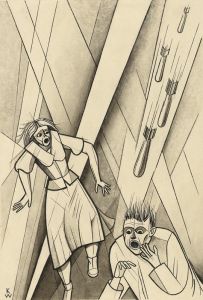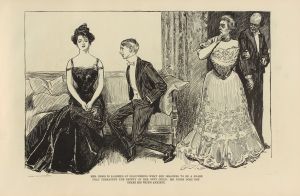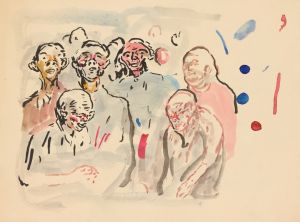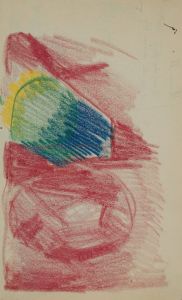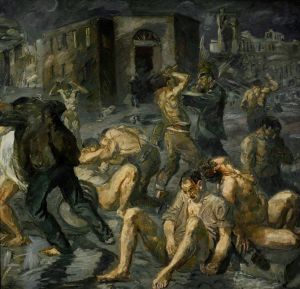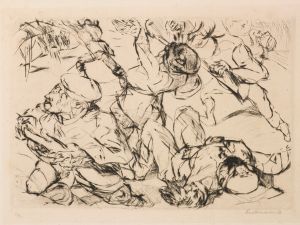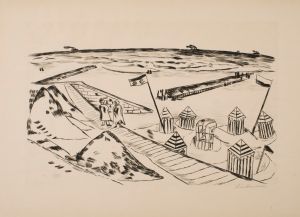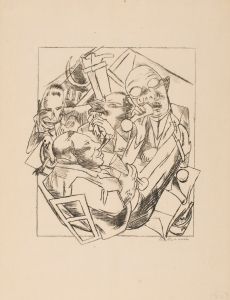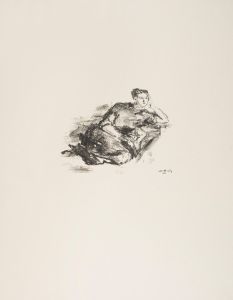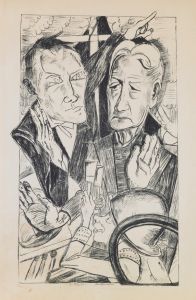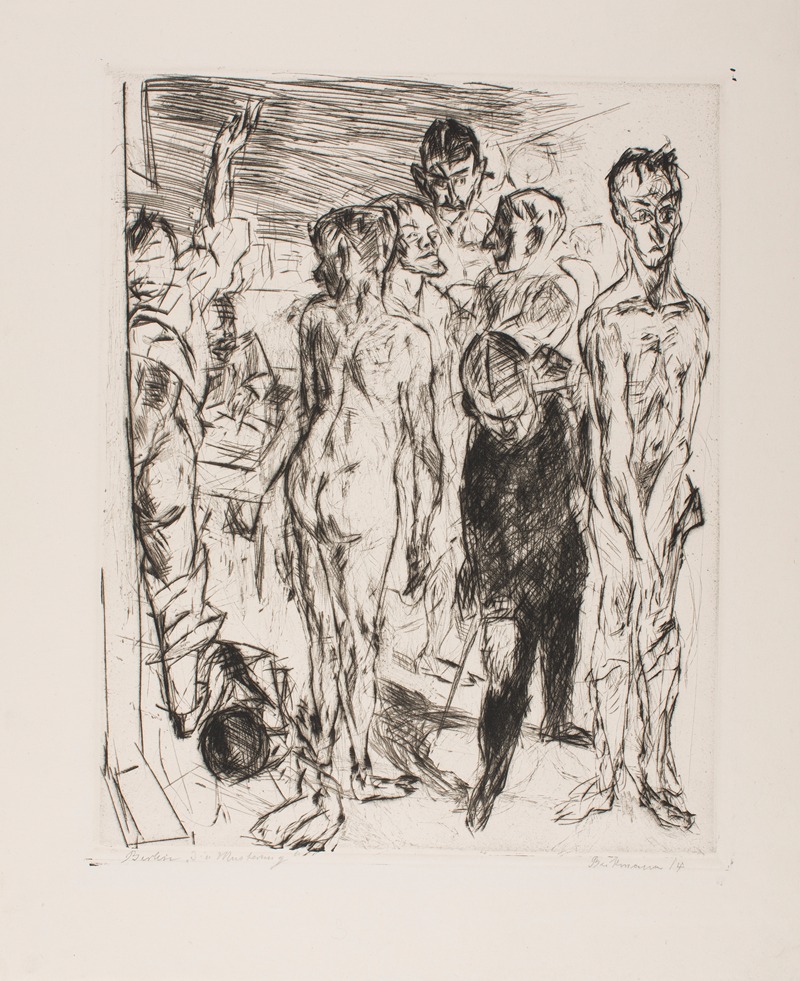
Inspection
A hand-painted replica of Max Beckmann’s masterpiece Inspection, meticulously crafted by professional artists to capture the true essence of the original. Each piece is created with museum-quality canvas and rare mineral pigments, carefully painted by experienced artists with delicate brushstrokes and rich, layered colors to perfectly recreate the texture of the original artwork. Unlike machine-printed reproductions, this hand-painted version brings the painting to life, infused with the artist’s emotions and skill in every stroke. Whether for personal collection or home decoration, it instantly elevates the artistic atmosphere of any space.
Max Beckmann's painting "The Inspection" is a notable work by the German painter, who is recognized for his contributions to the Expressionist movement. Beckmann, born in 1884, was a prominent figure in the art world during the early to mid-20th century, known for his distinctive style that often combined elements of Expressionism and New Objectivity.
"The Inspection," created in 1927, is a significant piece that reflects Beckmann's complex approach to painting, characterized by bold colors, dynamic compositions, and a focus on the human condition. This painting is part of Beckmann's broader body of work that often explores themes of social critique, existential inquiry, and the human experience in the modern world.
In "The Inspection," Beckmann employs his signature style of using sharp lines and vivid colors to create a scene that is both intense and thought-provoking. The painting depicts a group of figures in a setting that suggests a sense of scrutiny or evaluation, which is a recurring theme in Beckmann's work. The figures are rendered with a sense of psychological depth, each character seemingly caught in a moment of introspection or interaction that invites the viewer to ponder their roles and relationships.
Beckmann's work during this period often reflects the tumultuous social and political climate of post-World War I Germany. The Weimar Republic era, marked by economic instability and social change, provided a backdrop for Beckmann's exploration of themes such as alienation, identity, and the human psyche. "The Inspection" can be seen as a commentary on these themes, capturing the tension and uncertainty of the time.
The painting's composition is notable for its use of space and perspective, which creates a sense of immediacy and engagement. Beckmann's technique of layering figures and objects within the scene adds to the complexity of the narrative, encouraging viewers to explore the interactions and emotions depicted. The use of color in "The Inspection" is particularly striking, with Beckmann employing a palette that enhances the emotional impact of the scene.
Max Beckmann's work, including "The Inspection," has been influential in the development of modern art, with his paintings often serving as a bridge between the Expressionist movement and later artistic developments. His ability to convey deep psychological and social themes through his art has earned him a lasting place in art history.
"The Inspection" is housed in a collection that appreciates Beckmann's contribution to art, and it continues to be studied and admired for its artistic and historical significance. Beckmann's legacy is preserved through his paintings, which remain relevant for their insightful exploration of the human condition and their reflection of the societal challenges of his time.





